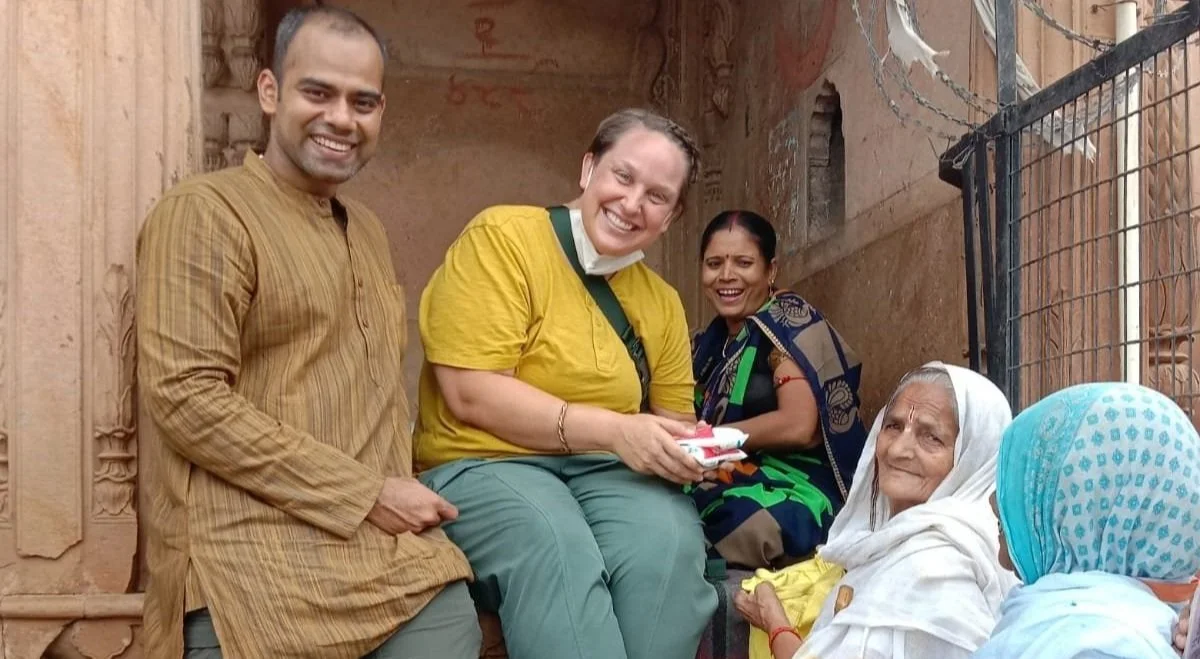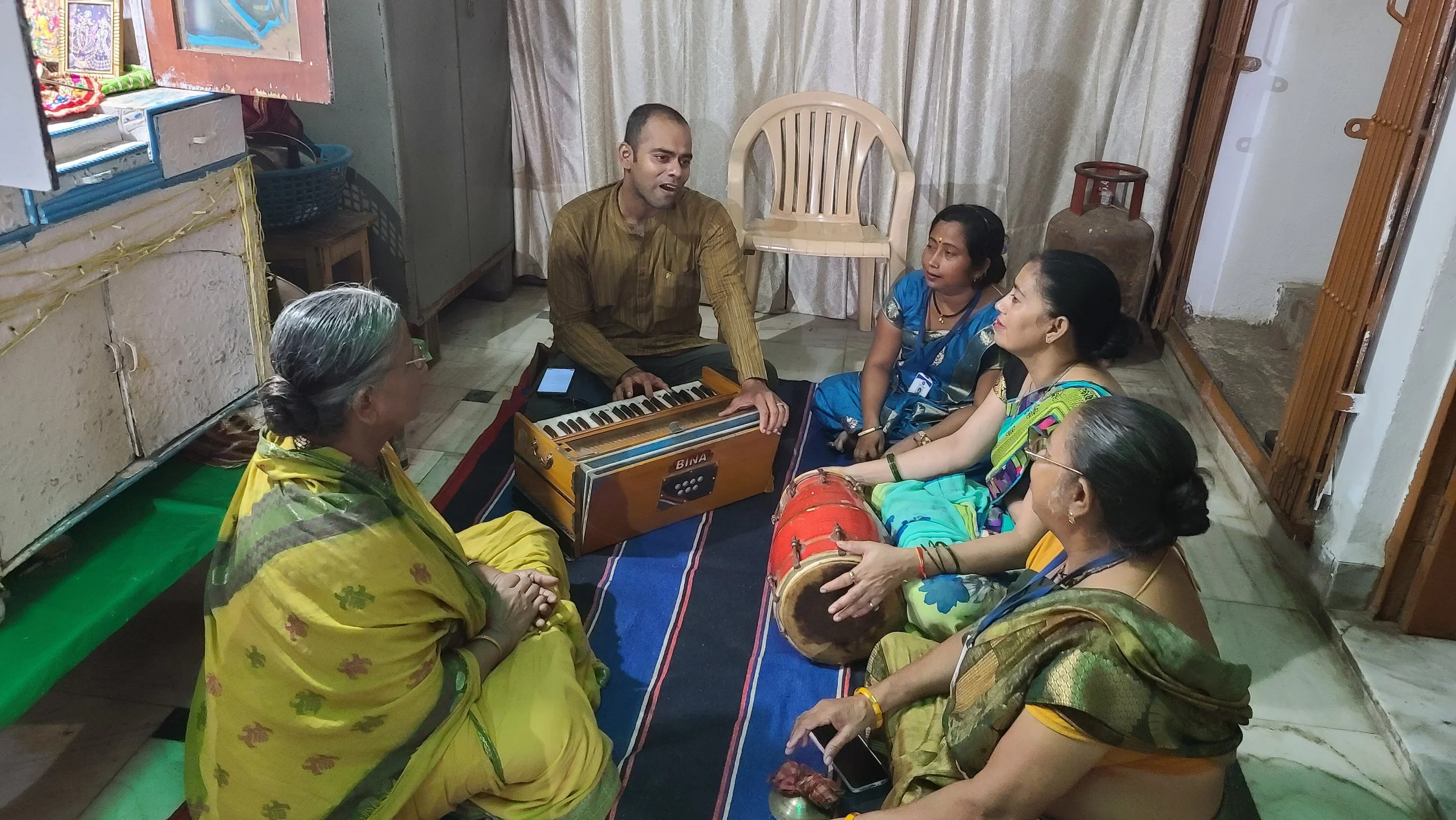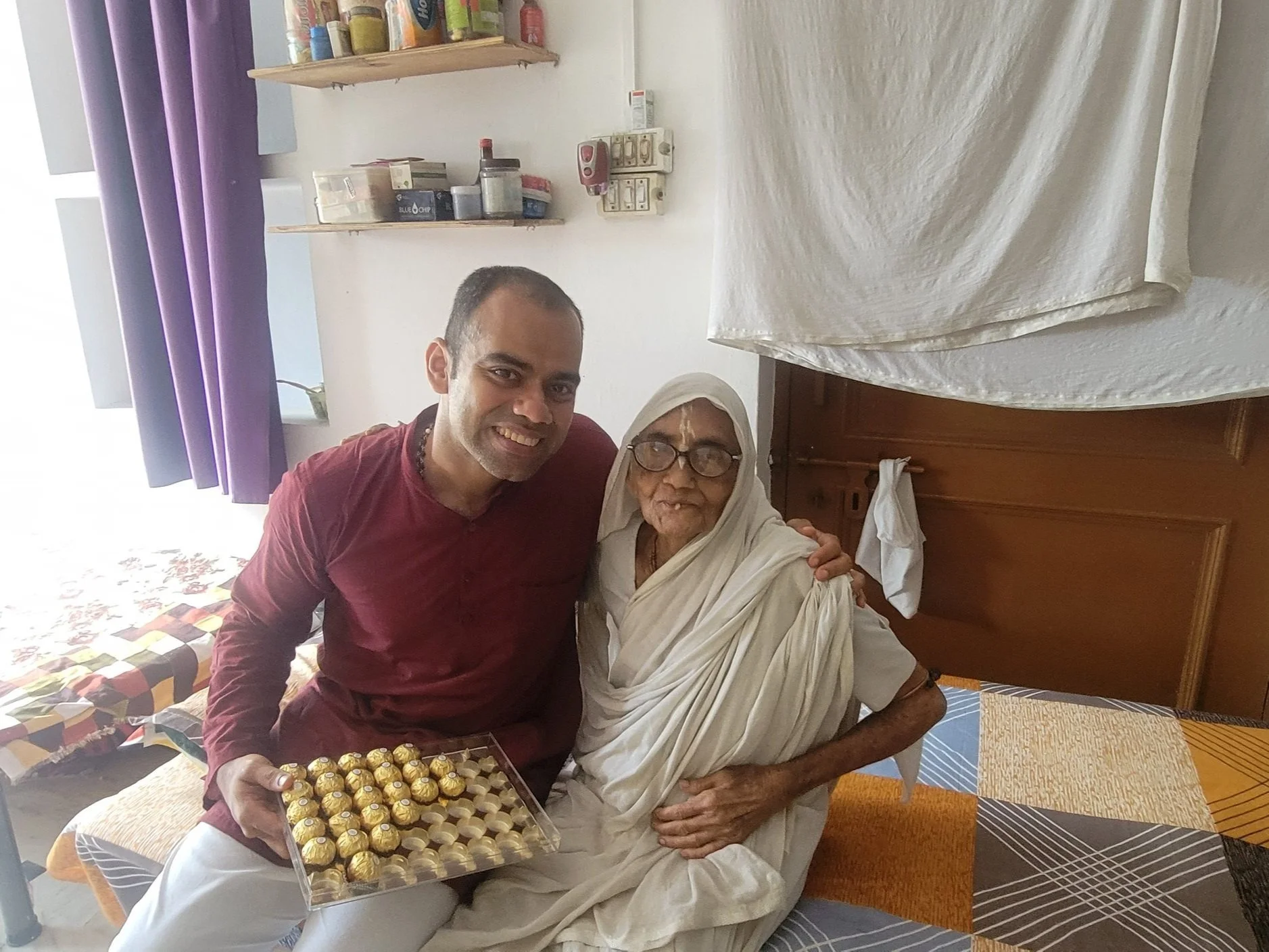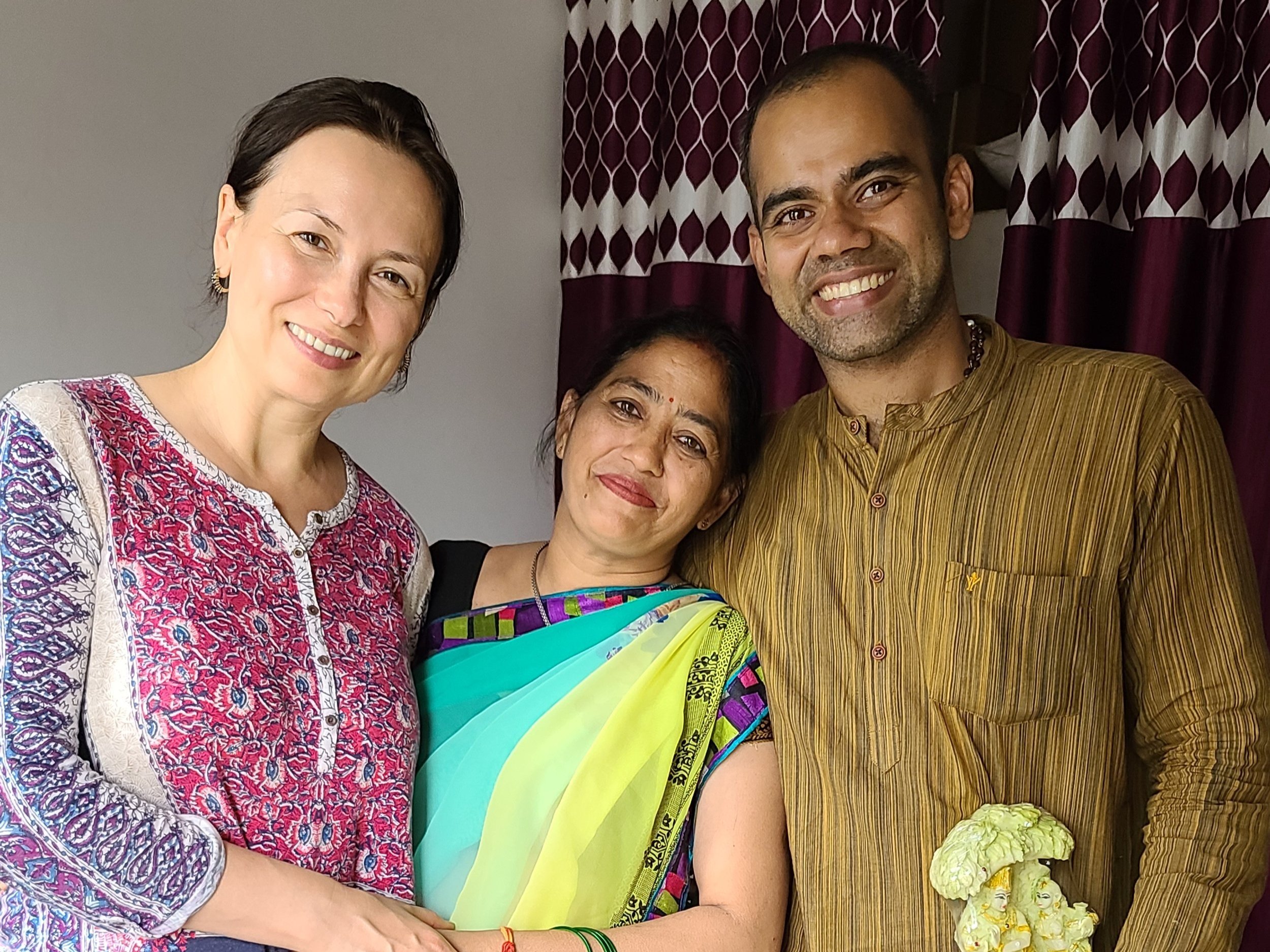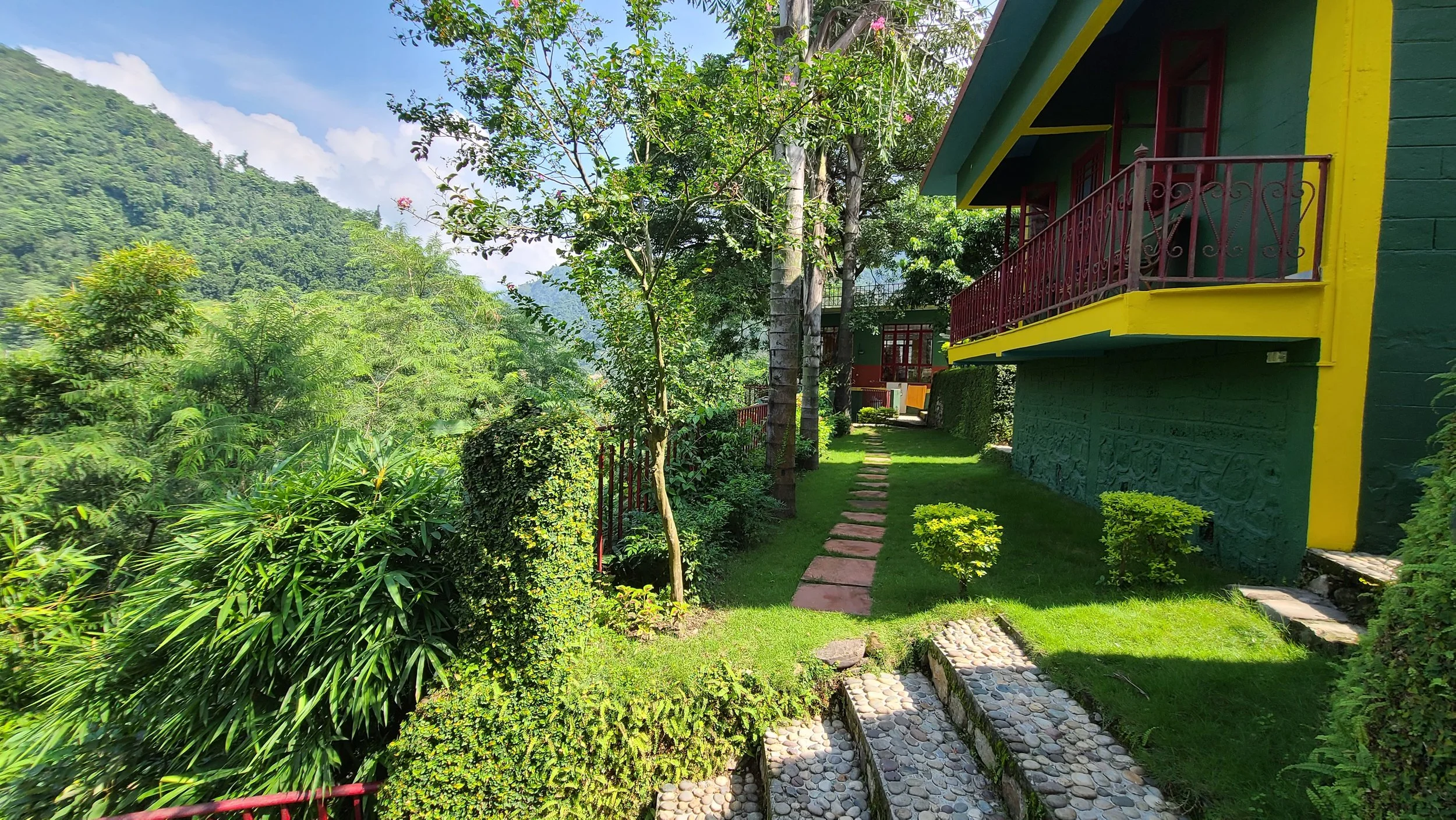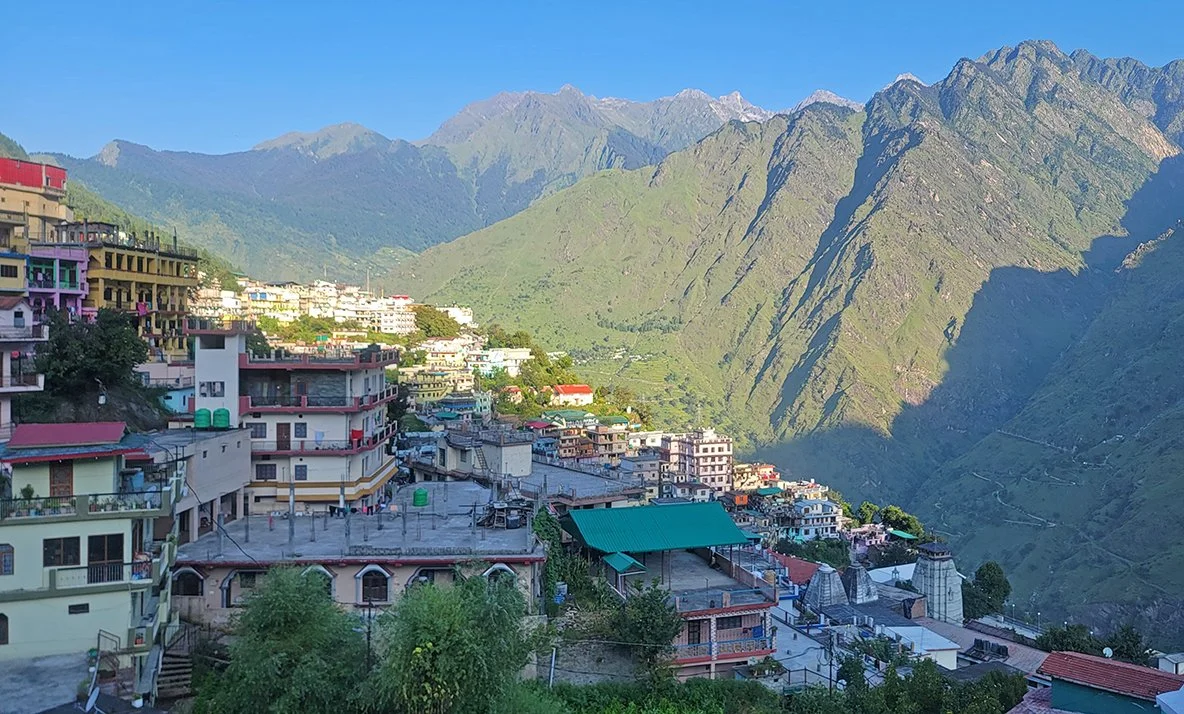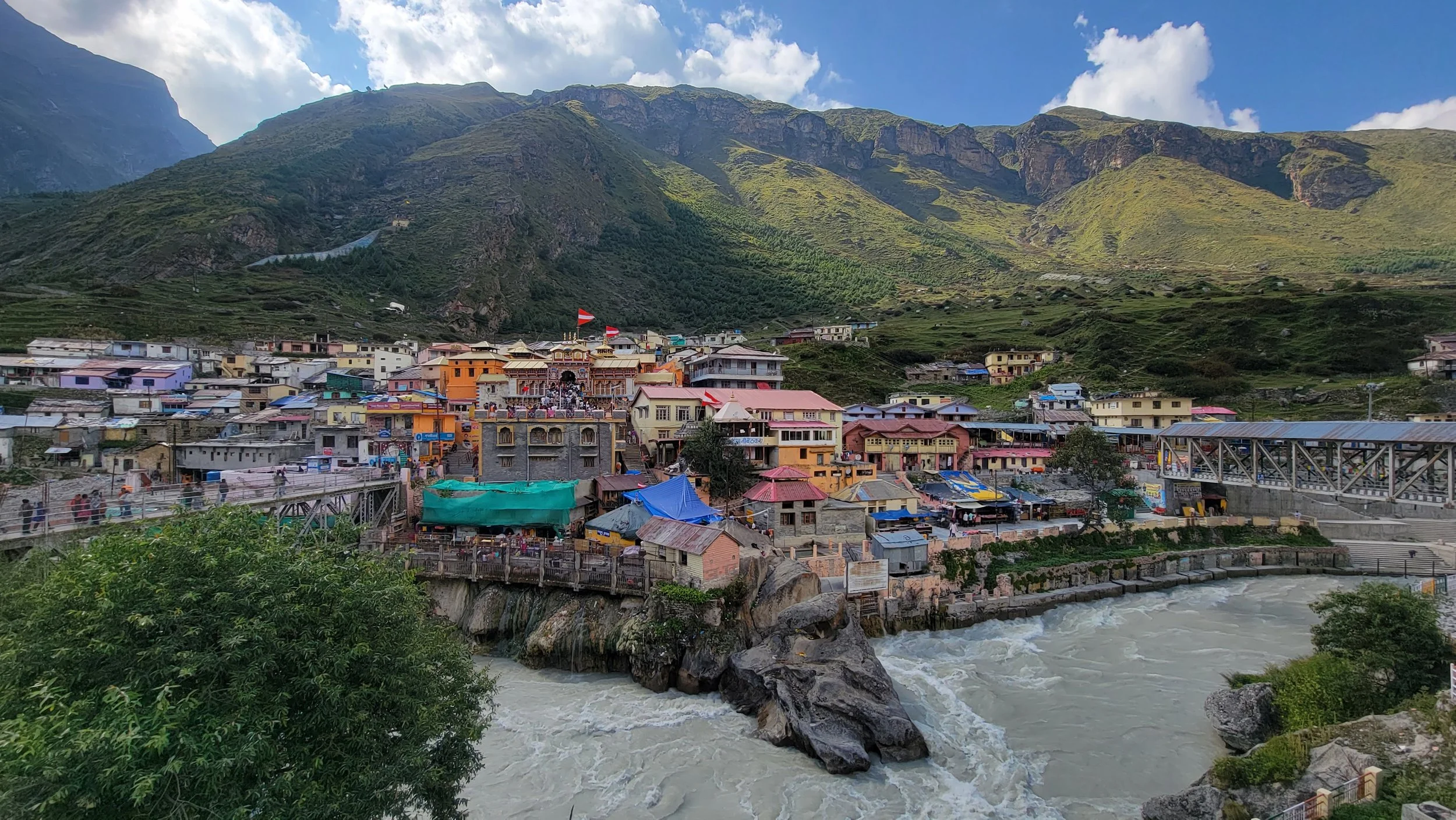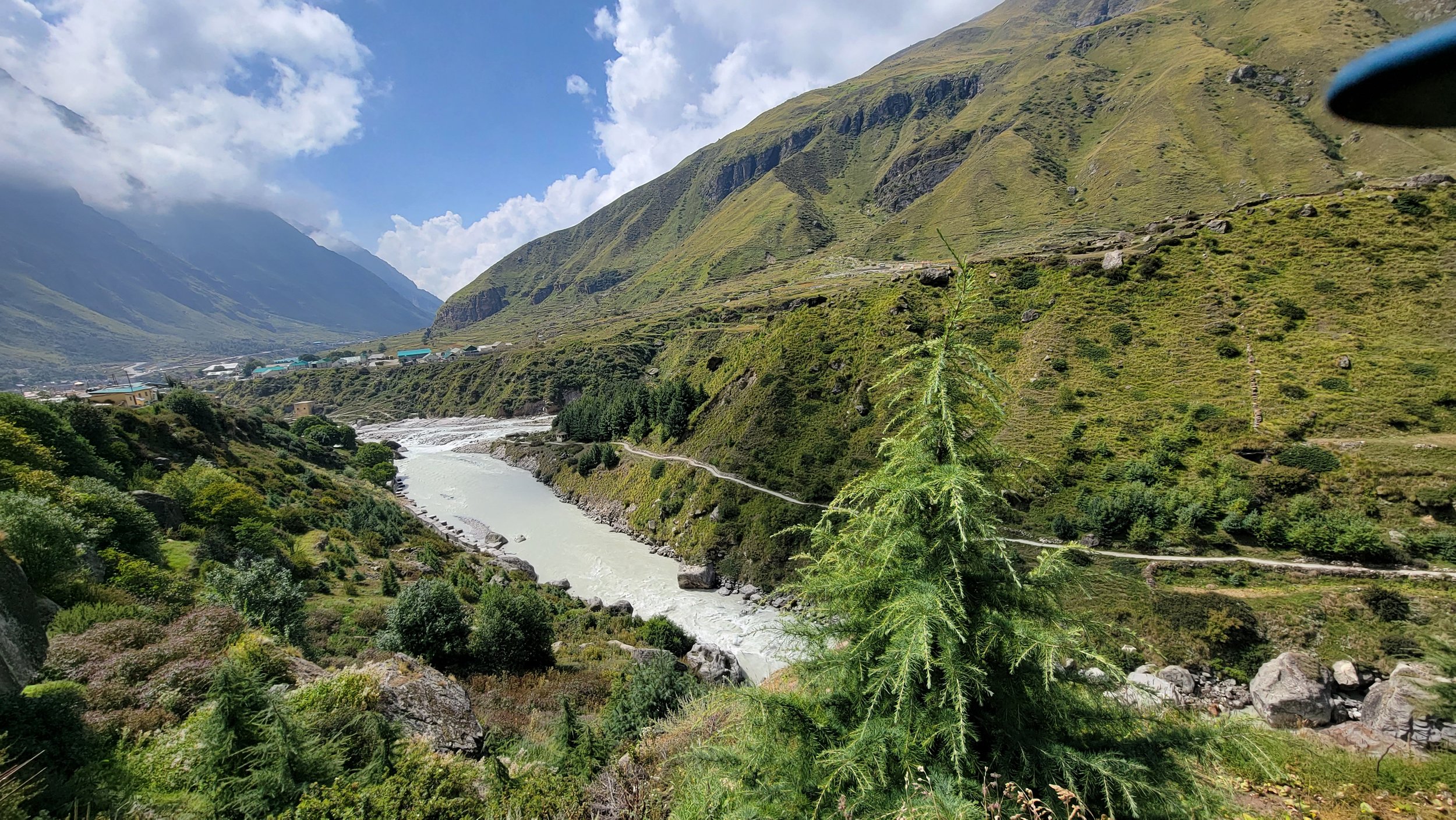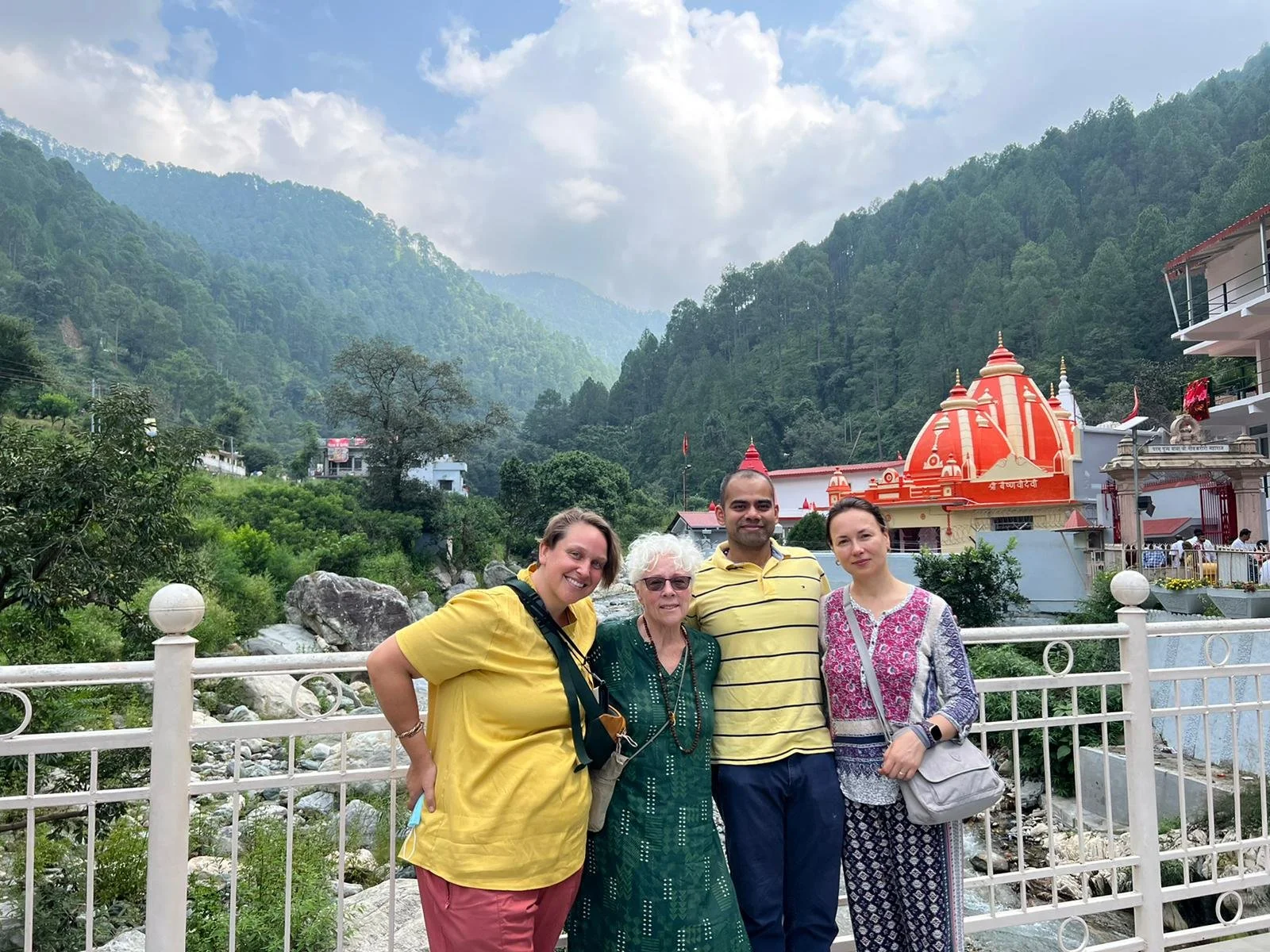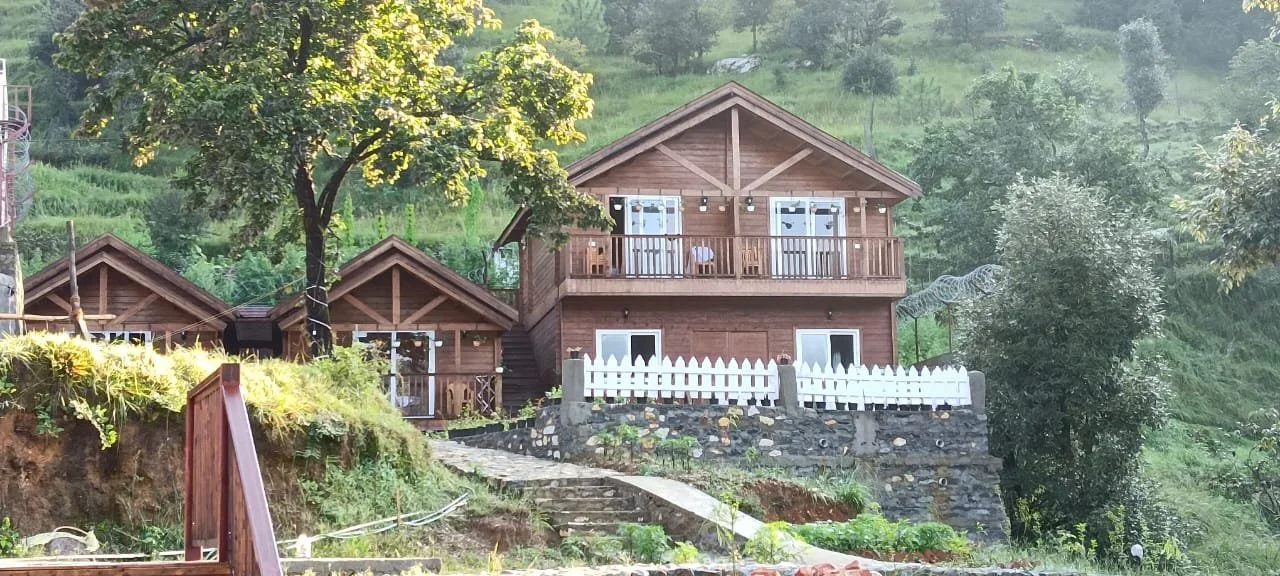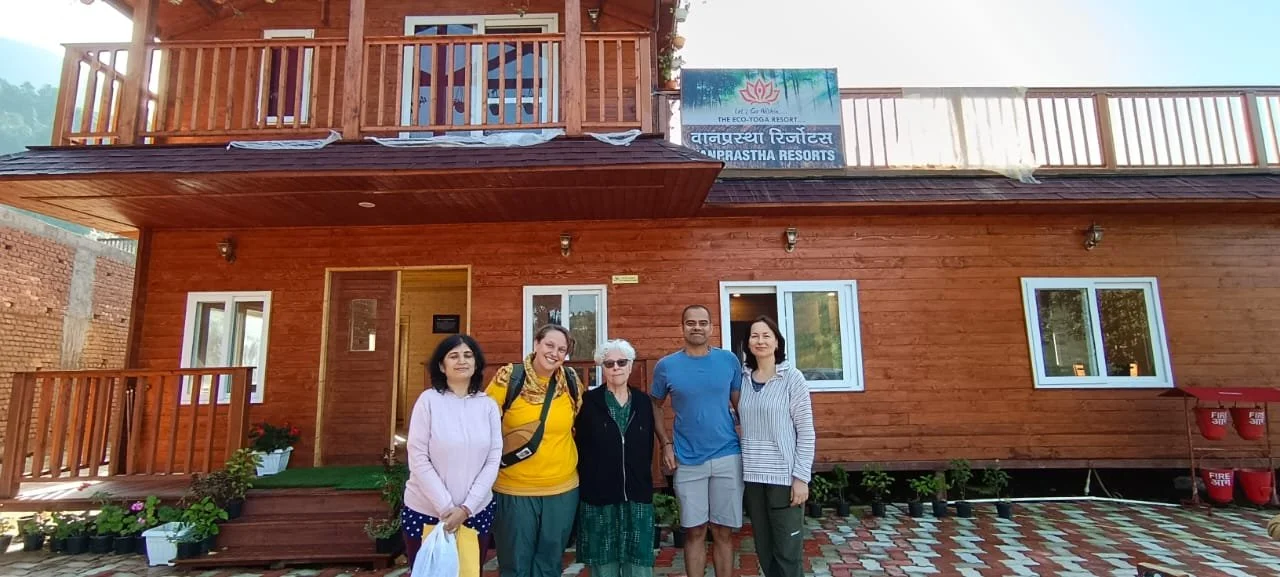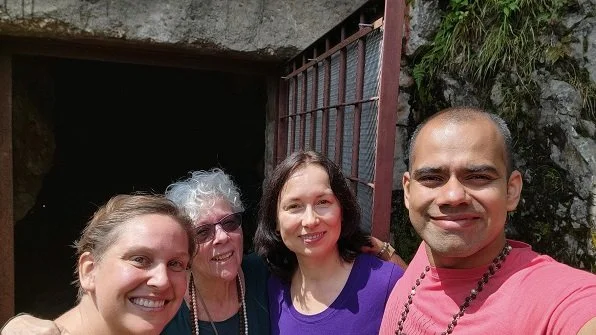The holy town of Brindavan has been immortalized in the autobiography of a yogi through the story of the two penniless boys. Yogananda and his friend place all their faith in God and embark on their travels to this holy town without any money in hand. Their faith carries them through not just providing them with their necessities but rather many folds more.
For the thousands of widows and the elderly who live as destitute in this town today, this principle of placing one's faith in God is more than a precept but rather the story of their everyday life. For ages, widows have been abandoned to spend their time chanting to Krishna and begging for alms in Vrindavan. With the increasing population density, modernization and shifts in culture, their plight has become rather pitiful.
I will assume that the readers of this blog have some familiarity with Ananda's work in Brindavan through Paramhansa Yogananda charitable trust which started in 2015 through a generous devotee benefactor. I will skip some of the introductions here in the interest of time and share more of my personal experience visiting this holy town and spending time with the trust’s staff and the widow mothers.
Vrindavan is the land of Krishna - or rather Radha, to be precise - Krishna's eternal beloved, who he is in constant pursuit of. One cannot take ten steps in Vrindavan without hearing the name of Krishna chanted. Everyone greets you lovingly with "Radhey Radhey" and refers to each other as Radha - aren't we all in essence, the Lord's lovers seeking union with him?
The time I had with the widows filled my heart in a way that is hard to describe in words - and yet I will try.
There are many aspects to Ananda's work in Vrindavan. There are care homes where the widow mothers are housed. There are perhaps 70 or 80 mothers who live in 4 care different care homes. There are over 3000 others who the trust cares for. Most of them live independently in different parts of the town. They are provided with all their basic needs, including food and ration, daily supply of milk and vegetables, in addition to medical care.
Distributing milk and vegetables
Chanting with the mothers
Caring medically for aging mothers is it's own stream of work, and for that, we have partnered with a local charitable hospital. The trust has an ambulance and every morning transports many mothers back and forth from the hospital, providing essential medical care. The trust also has employed resident staff who work out of the hospital caring for the mothers when they come there.
Those are just the organizational details. What one experiences upon meeting the angelic staff and saintly widow mothers is the incredible amount of love everyone has to share. The most important of all things that we provide to the mothers is love and care - it cannot be captured in numbers or words.
Sharing chocolates with one of the mothers
The joy of sharing love
One after another as I greeted, sat next to, and hugged the widow mothers, my heart was overwhelmed. Aging is challenging and yet they all exuded life. Many of them are living the happiest days of their lives. When they express joy, it is the kind that is hard won. Each mother has a story that surpassed a movie script in drama and tragedy. Their supreme solace is Krishna's name constantly on their lips.
With Rama, one of the angels that serves the widows
The staff that works for the trust, especially the core group that works out of the office consists of an inspiring group of women, whose lives and stories are almost no different from the widows in their hardships. Many of them deeply devoted to Yogananda and are Kriyabans now. It is by no means an exaggeration when I say that being in their presence was like meeting living saints who share and serve with their heart and soul. They share such tender motherly love with the widows that is so moving to watch. The widows are all like their children and refer to the staff as their mothers!
Feeding hungry monkeys
Another aspect of Seva that the trust started during the pandemic is caring for the stray animals in Vrindavan - Monkeys, dogs, cows, etc. that were starving due to lack of tourists. They go on feeding round every afternoon and it was delightful experience accompanying them on one of these rounds. Although tourists are back, these rounds have become the lifeline for many animals now, and so the trust continues them. The monkeys that are infamous for being rowdy approached us with such respect :)
Although my time in Vrindavan was limited two days, it left a deep impact and I am sure will draw many of us back to the town again. I could write pages more on the work that is happening there or the stories of the widows mothers and staff, but nothing would equal visiting this place once, holding the hand of one the widow mothers and chanting Krishna’s name with them.
Financial support to the work is also greatly appreciated. Donations can be made through Ananda India (once you do, please write a note to Jayeeta - jayeeta.chakraborty@gmail.com mentioning that it is a designated donation for the trust, so that it reaches the right destination).
If you would like to visit Vrindavan and need guidance or help, please feel free to reach out to me. And also if you feel the call to connect with the work there, learn more, find ways to plug in from here, I am happy to chat more. You will be surprised how heart opening and deeply fulfilling this experience can be!

